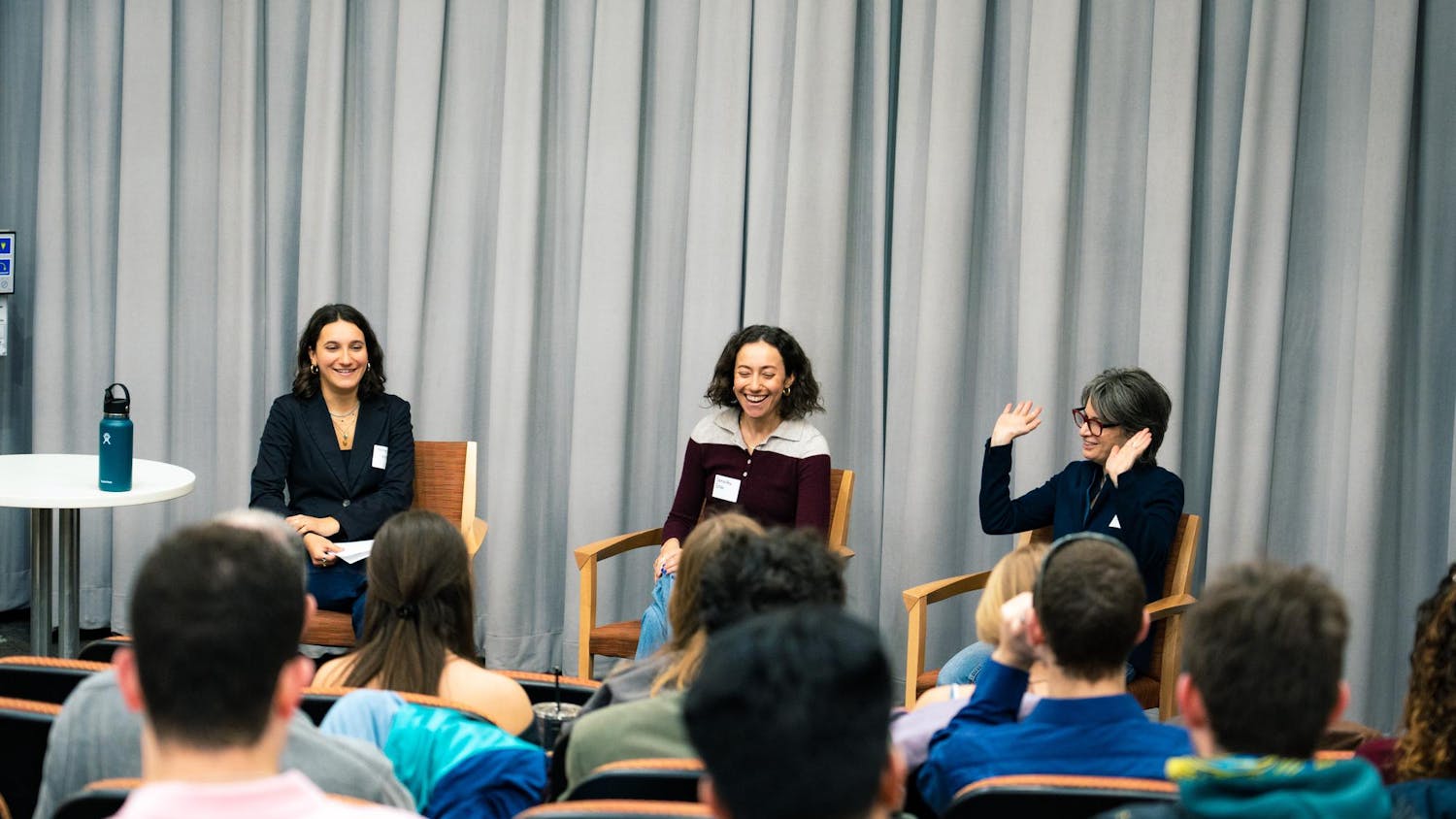A unique take on classical music filled Distler Performance Hall in the Granoff Music Center on Friday with the premiere of “New at Noon: Living Patterns,” an interdisciplinary performance of six musical compositions inspired by repetitive protein sequences.
The concert, a collaboration between faculty and student composers and Stephen Fuchs, an assistant professor of biology, offered experimental music inspired by Fuchs' research.
Fuchs shared where the idea for this unique event came from and the goals of the collaboration.
“[Professor of Music John McDonald] and I have been talking for years about doing some collaboration between music and science,” Fuchs said. “I was trained as a musician as well … [scientists] think creatively too, but not in the same way as musicians.”
Fuchs said that one of the goals of the collaboration was to "use other mediums to pull out new information and better understand science,” while another goal was to bridge the gap between scientists and non-scientists.
“The things we do in our labs -- for people who aren’t scientists -- is totally unapproachable," he said. "Maybe we can use music as a conduit to better raise awareness of the science that we do.”
In support of these goals, McDonald drew on research by the Department of Biology on RNA and protein sequences to create a musical structure for his composition, using a musical cryptogram to link musical notes with letters representing proteins. He also used repetitions in the RNA sequence and pauses in the music where the repetitions broke down in creating his piece.
McDonald also worked with his students to help develop their own interpretations of the protein sequences. When talking about how his students' approach, he said that they all started in a similar place.
“Everyone had their own code, which turned [the sequence] into [a] musical structure,” he said.
Among the featured works were two vocal pieces, two piano pieces, a bassoon piece and a viola piece.
Julia Cavallaro, artist of one of the vocal pieces, said her composition was inspired by the separation of children from their mothers and fathers along the U.S.-Mexico border. The piece, called "Speak to Speak," drew upon words that were “simple, powerful, and active, evoking sometimes violent imagery," according to the brochure handed out at the event.
“I began to play with possible translations, treating each protein letter as the start of a short, one-syllable English word,” Cavallaro wrote in the brochure.
Cavallaro's composition was not the only vocal piece inspired by the same protein sequence. "Manic Nocturne," performed by first-year graduate music student Adam Simon, was inspired by Simon’s inability to sleep one night. According to the show’s program, Simon was trying to fall asleep at 2 a.m. when he referred to an email from McDonald about a collection of RNA sequences for his composition.
"[I was looking at] the very letters supposedly responsible for why I can’t sleep," Simon wrote, referring to the sequences' impact on his biological clock. “The sequences on that page were associated with whether or not you are a 'night' or a 'morning' person.”
McDonald also used the concert as an opportunity to raise awareness for all of the current and future collaborations between the music department and other academic disciplines. He said that Fuchs may use the music to help teach his lectures, while highlighting the music engineering minor and the film and media studies program as two existing collaborations.
Aaron Wong, a senior who wrote and performed the bassoon piece, "Sequences," told the Daily in an email the difficulties of composing his piece.
"I'd never worked with a text before, let alone protein sequences. It was a challenge to write a piece that was both musically interesting and that conveyed the repetitive patterns in some form," Wong said.
He said that the format worked for all.
"All the composers took their own unique approach, and all worked extremely well," Wong said.
Protein sequences meet music at interdisciplinary performance of faculty, student compositions

Granoff Music Center is pictured on May 7, 2014.





